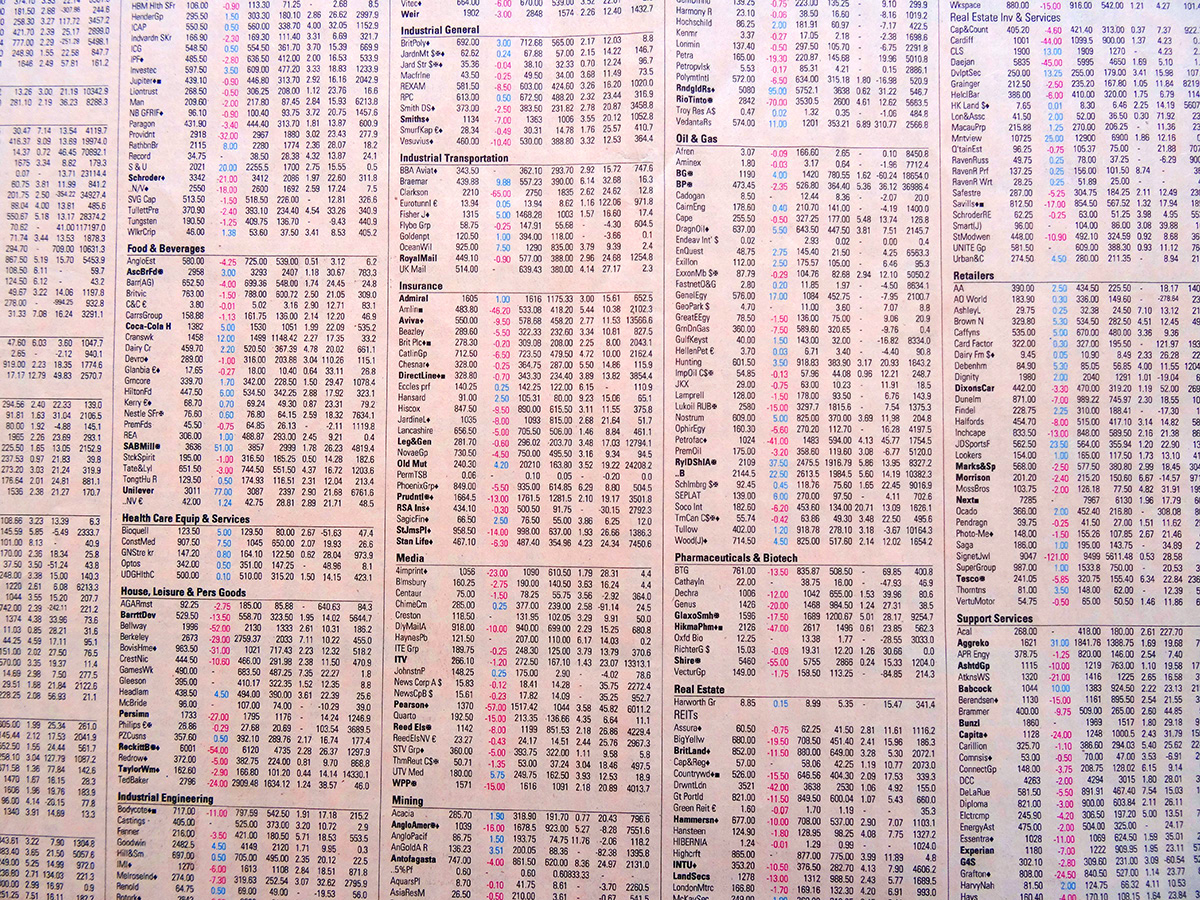 With the onset of the pandemic in early 2020, stock markets around the world fell dramatically, with many indices falling by 30% or more. In the USA, the Dow Jones fell by 37% and the Nasdaq fell by 30%. In the UK, the FTSE 100 fell by 33% and the FTSE 250 by 41%.
With the onset of the pandemic in early 2020, stock markets around the world fell dramatically, with many indices falling by 30% or more. In the USA, the Dow Jones fell by 37% and the Nasdaq fell by 30%. In the UK, the FTSE 100 fell by 33% and the FTSE 250 by 41%.
But with a combination of large-scale government support for their economies, quantitative easing by central banks and returning confidence of investors, stock markets then made a sustained recovery and have continued to grow strongly since – until recently, that is.
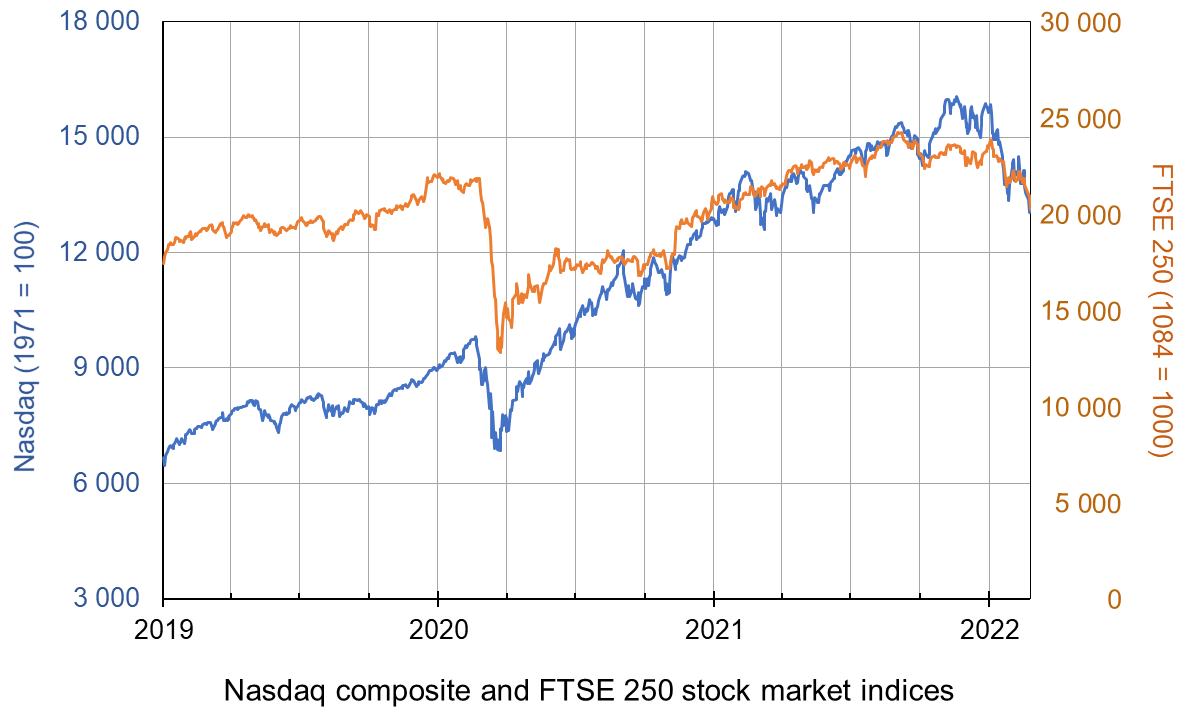
With inflation well above target levels, central banks have ended quantitative easing (QE) or have indicated that they soon will. Interest rates are set to rise, if only slowly. The Bank of England raised Bank Rate from its historic low of 0.1% to 0.25% on 16 December 2021 and ceased QE, having reached its target of £895 billion of asset purchases. On 4 February 2022, it raised Bank Rate to 0.5%. The Fed has announced that it will gradually raise interest rates and will end QE in March 2022, and later in the year could begin selling some of the assets it has purchased (quantitative tightening). The ECB is not ending QE or raising interest rates for the time being, but is likely to do so later in the year.
At the same time economic growth is slowing, leading to fears of stagflation. Governments are likely to dampen growth further by tightening fiscal policy. In the UK, national insurance is set to rise by 1.25 percentage points in April.
The slowdown in growth may discourage central banks from tightening monetary policy more than very slightly. Indeed, in the light of its slowing economy, the Chinese central bank cut interest rates on 20 January 2022. Nevertheless, it is likely that the global trend will be towards tighter monetary policy.
The fears of slowing growth and tighter monetary and fiscal policy have led many stock market investors to predict an end to the rise in stock market prices – an end to the ‘bull run’. This belief was reinforced by growing tensions between Russia and NATO countries and fears (later proved right) that Russia might invade Ukraine with all the turmoil in the global economy that this would entail. Stock market prices have thus fallen.
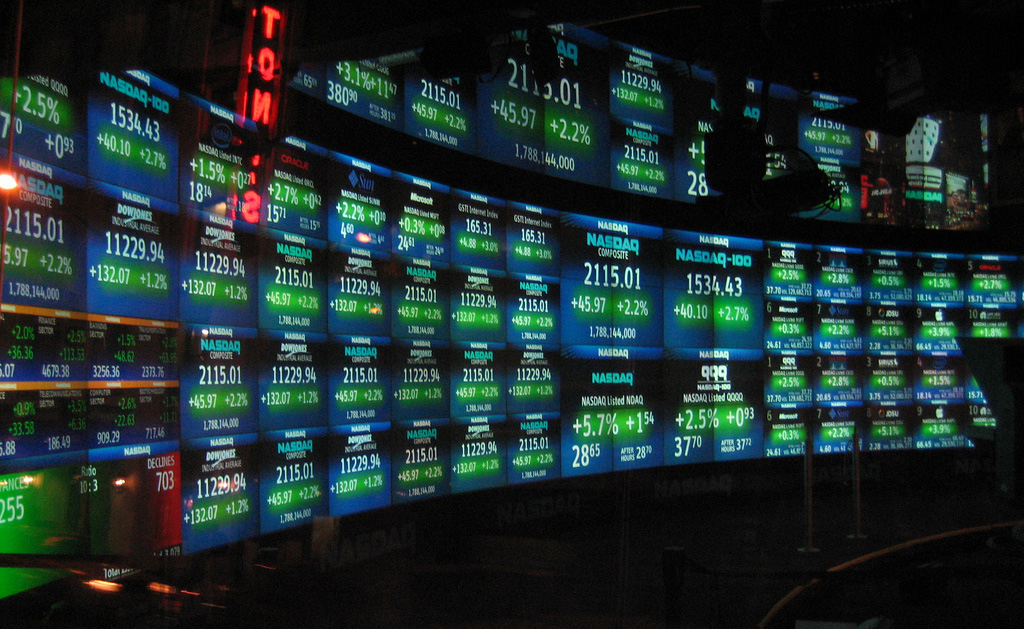 The key question is what will investors believe. If they believe that share prices will continue to fall they are likely to sell. This has happened since early January, especially in the USA and especially with stocks in the high-tech sector – such stocks being heavily represented in the Nasdaq composite, a broad-based index that includes over 2500 of the equities listed on the Nasdaq stock exchange. From 3 January to 18 February the index fell from 15 833 to 13 548, a fall of 14.4%. But will this fall be seen as enough to reflect the current economic and financial climate. If so, it could fluctuate around this sort of level.
The key question is what will investors believe. If they believe that share prices will continue to fall they are likely to sell. This has happened since early January, especially in the USA and especially with stocks in the high-tech sector – such stocks being heavily represented in the Nasdaq composite, a broad-based index that includes over 2500 of the equities listed on the Nasdaq stock exchange. From 3 January to 18 February the index fell from 15 833 to 13 548, a fall of 14.4%. But will this fall be seen as enough to reflect the current economic and financial climate. If so, it could fluctuate around this sort of level.
However, some may speculate that the fall has further to go – that indices are still too high to reflect the earning potential of companies – that the price–earnings ratio is still too high for most shares. If this is the majority view, share prices will indeed fall.
Others may feel that 14.4% is an overcorrection and that the economic climate is not as bleak as first thought and that the Omicron coronavirus variant, being relatively mild for most people, especially if ‘triple jabbed’, may do less economic damage than first feared. In this scenario, especially if the tensions over Ukraine are diffused, people are likely to buy shares while they are temporarily low.
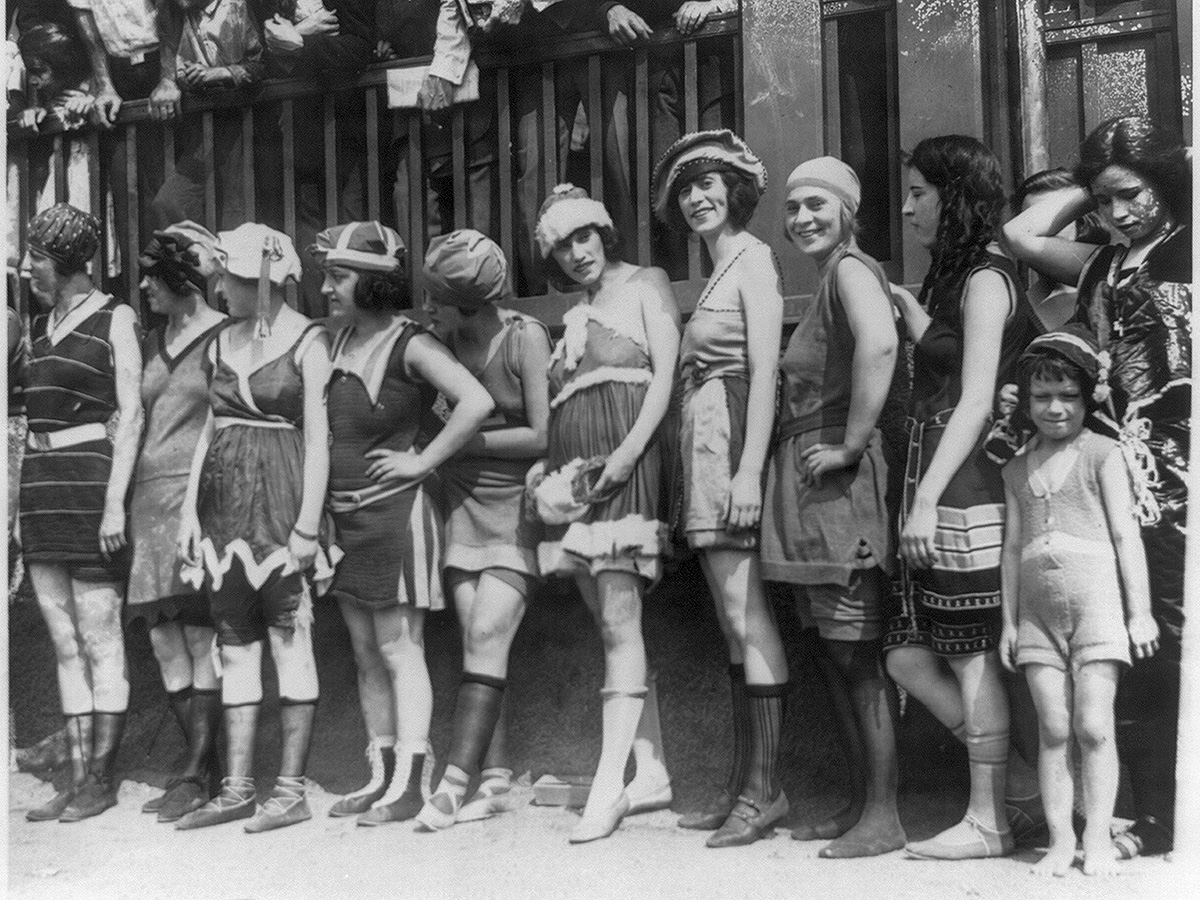 But a lot of this is second-guessing what other people will do – known as a Keynesian beauty contest situation. If people believe others will buy, they will too and this will push share prices up. If they think others will sell, they will too and this will push share prices down. They will all desperately wish they had a crystal ball as they speculate how people will interpret what central banks, governments and other investors will do.
But a lot of this is second-guessing what other people will do – known as a Keynesian beauty contest situation. If people believe others will buy, they will too and this will push share prices up. If they think others will sell, they will too and this will push share prices down. They will all desperately wish they had a crystal ball as they speculate how people will interpret what central banks, governments and other investors will do.
Articles
Questions
- What changes in real-world factors would drive investors to (a) buy (b) sell shares at the current time?
- How does quantitative easing affect share prices?
- What is meant by the price-earnings ratio of a share? Is it a good indicator as to the likely movement of that share’s price? Explain.
- What is meant by a Keynesian beauty contest? How is it relevant to the stock market?
- Distinguish between stabilising and destabilising speculation and illustrate each with a demand and supply diagram. Explain the concept of overshooting in this context.
- Which is more volatile, the FTSE 100 or the FTSE 250? Explain.
- Read the final article linked above. Were the article’s predictions about the Fed meeting on 26 January borne out? Comment.
What do tulips, nickel mining in Australia, South Seas trading, Beanie Babies and cryptocurrencies have in common? The answer is that they have all been the subject of speculative bubbles. In the first four cases the bubble burst. A question currently being asked is whether it will happen to bitcoin.
Bitcoin
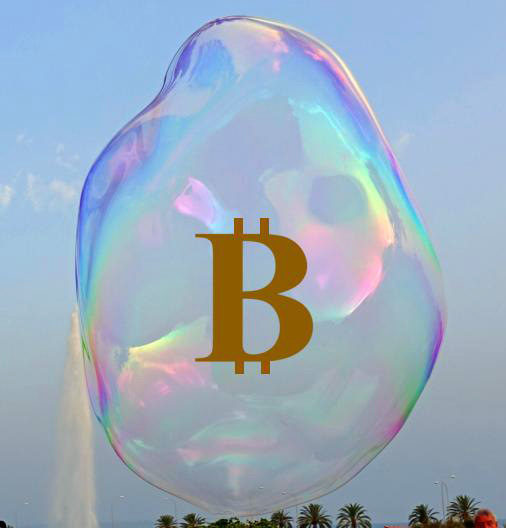 Bitcoin was created in 2009 by an unknown person, or people, using the alias Satoshi Nakamoto. It is a digital currency in the form of a line of computer code. Bitcoins are like ‘electronic cash’ which can be held or used for transactions, with holdings and transactions heavily encrypted for security – hence it is a form of ‘crytocurrency’. People can buy and sell bitcoins for normal currencies as well as using them for transactions. People’s holdings are held in electronic ‘wallets’ and can be accessed on their computers or phones via the Internet. Transfers of bitcoins from one person or organisation to another are recorded in a public electronic ledger in the form of a ‘blockchain‘.
Bitcoin was created in 2009 by an unknown person, or people, using the alias Satoshi Nakamoto. It is a digital currency in the form of a line of computer code. Bitcoins are like ‘electronic cash’ which can be held or used for transactions, with holdings and transactions heavily encrypted for security – hence it is a form of ‘crytocurrency’. People can buy and sell bitcoins for normal currencies as well as using them for transactions. People’s holdings are held in electronic ‘wallets’ and can be accessed on their computers or phones via the Internet. Transfers of bitcoins from one person or organisation to another are recorded in a public electronic ledger in the form of a ‘blockchain‘.
The supply of bitcoins is not controlled by central banks; rather, it is determined by a process known as ‘mining’. This involves individuals or groups solving complex and time-consuming  mathematical problems and being rewarded with a new block of bitcoins.
mathematical problems and being rewarded with a new block of bitcoins.
The supply of bitcoins is currently growing at around 150 per hour and the current supply is around ₿16.7 million. However, the number of new bitcoins in a block is halved for every 210,000 blocks. This means that the rate of increase in the supply of bitcoins is slowing – the number generated being halved roughly every four years. The supply will eventually reach a maximum of ₿21 million, probably sometime in the next century, but around 99% will have been mined by around 2032.
The bitcoin bubble
The price of bitcoins has soared in recent months and especially in the past two. On 4 October, the price of a bitcoin was $4226; by 7 December it was nearly four times higher, at $16,858 – a rise of 399% in just nine weeks. Many people have claimed that this is a bubble, which will soon burst. Already there have been severe fluctuations. By December 10, for example, the price had fallen at one point to $13,152 – a fall of nearly 22% in just two days – only to recover to over $15,500 within a few hours.
So what determines the price of bitcoin? The simple answer is very straightforward – it’s determined by demand and supply. But what has been happening to demand and supply and why? And what will happen in the near and more distant future?
As we have seen, the supply is limited by the process of mining, which allows a relatively stable, but declining, increase. The explanation of the recent price rise and what will happen in the future lies on the demand side. Increasing numbers of people have been buying bitcoin, not because they want to use it for transactions, whether legitimate or illegal over the dark web, but because they want to invest in bitcoin. In other words, they want to hold bitcoin as an asset which is increasing in value. These people are known as ‘hodlers’ – a deliberate misspelling of ‘holders’.
But this speculation is of the destabilising form. The more prices have risen, the more people have bought bitcoin, thus pushing the price up further. This is a classic bubble, whereby the price does not reflect an underlying value, but rather the exuberance of buyers.
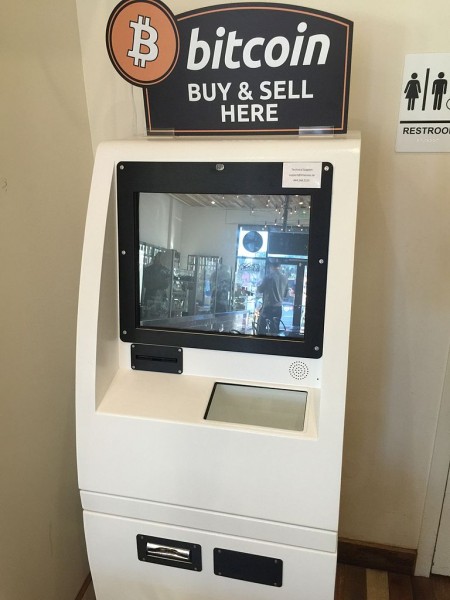 The problem with bubbles is that they will burst, but just when is virtually impossible to predict with any accuracy. If the price of bitcoins falls, what will happen next depends on how the fall is interpreted. It could be interpreted as a temporary fall, caused by some people cashing in to take advantage of the higher prices. At the same time, other people, believing that it is only a temporary fall, will rush to buy, snapping up bitcoins at the temporary low price. This ‘stabilising speculation’ will move the price back up again.
The problem with bubbles is that they will burst, but just when is virtually impossible to predict with any accuracy. If the price of bitcoins falls, what will happen next depends on how the fall is interpreted. It could be interpreted as a temporary fall, caused by some people cashing in to take advantage of the higher prices. At the same time, other people, believing that it is only a temporary fall, will rush to buy, snapping up bitcoins at the temporary low price. This ‘stabilising speculation’ will move the price back up again.
However, the fall in price may be seen as the bubble bursting, with even bigger falls ahead. In this case, people will rush to sell before it falls further, thereby pushing the price even lower. This destabilising speculation will amplify the fall in prices.
But even if the bubble does burst, people may believe that another bubble will then occur and, once they think the bottom has been reached, will thus start buying again and there will be a second speculative rise in the price.
The crash could be very short-lived. This happened with the second biggest cryptocurrency, Ethereum. On 21 June this year, the price at the beginning of the day was $360. It then began to fall during the say. Once its price reached $315, it then collapsed by 96% to $13 with massive selling, much of it automatic with computers programmed to sell when the price falls by more than a certain amount. But then, on the same day, it rebounded. Within minutes it had bounced back and was trading at $337 at the end of the day. It is now trading at around $450 – up from around $300 four weeks ago.
Whether the bubble in bitcoin has more to inflate, when it will burst, and when it will rebound and by how much, depends on people’s expectations. But what we are looking at here is people’s expectations of what other people are likely to do – in other words, of other people’s expectations, which in turn depend on their expectations of other people’s expectations. This situation is known as a Keynesian Beauty Contest (see the blog, A stock market beauty contest of the machines). Perhaps we need a crystal ball.
Information site
Articles
- Is Bitcoin a bubble? Here’s what two bubble experts told us
Trade Online, Timothy B. Lee (8/12/17)
- Bitcoin and tulipmania have a lot more in common than you might think
Business Insider, Seth Archer (8/12/17)
- Bitcoin ends dramatic week with 20% slump followed by recovery
The Guardian, Jill Treanor (8/12/17)
- Putting a price on Bitcoin
The Economist, Buttonwood’s notebook (8/12/17)
- Is Bitcoin a Bubble Waiting to Pop?
InvestorPlace, Matt McCall (8/12/17)
- Bitcoin bubble follows classic pattern of investment mania
Financial Times, John Authers (8/12/17)
- The Bitcoin bubble – how we know it will burst
The Conversation, Larisa Yarovaya and Brian Lucey (6/12/17)
- Bitcoin isn’t a currency – and unless it becomes one it could be worthless
The Conversation, Vili Lehdonvirta (6/12/17)
- How Bitcoin futures trading could burst the cryptocurrency’s bubble
The Conversation, Nafis Alam (13/12/17)
- Op-ed: Bitcoin Is Not a Bubble; It’s in an S-Curve and It’s Just Getting Started
Bitcoin Magazine, Brandon Green (8/12/17)
- Bitcoin vs history’s biggest bubbles: They never end well
CNN Money, Daniel Shane (8/12/17)
- The 10 Most Ridiculous Price Bubbles In History
Business Insider, Vincent Fernando and Anika Anand (11/10/10)
- After bitcoin’s wild week, traders brace for futures launch
Reuters, Saqib Iqbal Ahmed (10/12/17)
Cryptocurrencies current market prices
Questions
- To what extent does Bitcoin meet the functions of money?
- Why is bitcoin unsuitable for normal transactions?
- To what extent is bitcoin like gold as a means of holding wealth?
- How would you advise someone thinking of buying bitcoin today? Explain why.
- Does a rapid rise in the price of an asset always indicate a bubble? Explain
- To what extent is the current rise in the price of bitcoin similar to that of the tulip, Poseidon and Beanie Baby bubbles?
- If bitcoin is appreciating relative to the dollar and other currencies, does this mean that the price of goods and services valued in bitcoin are falling? Explain.
- Explain and comment on the following sentence from the first Conversation article: “Like any asset, Bitcoin has some fundamental value, even if only a hope value, or a value arising from scarcity.”
- How might the introduction of futures trading in bitcoin impact on its price and the volatility of price swings?
- Explain and assess the argument that the price trend of bitcoin is more likely to be an S curve rather than a roller coaster
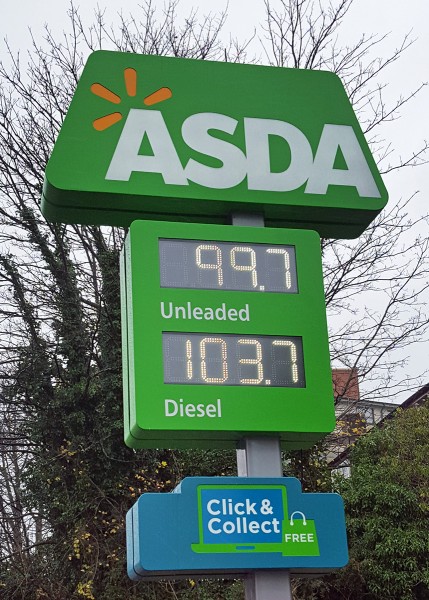 People are beginning to get used to low oil prices and acting as if they are going to remain low. Oil is trading at only a little over $30 per barrel and Saudi Arabia is unwilling to backtrack on its policy of maintaining its level of production and not seeking to prevent oil prices from falling. Currently, there is still a position of over supply and hence in the short term the price could continue falling – perhaps to $20 per barrel.
People are beginning to get used to low oil prices and acting as if they are going to remain low. Oil is trading at only a little over $30 per barrel and Saudi Arabia is unwilling to backtrack on its policy of maintaining its level of production and not seeking to prevent oil prices from falling. Currently, there is still a position of over supply and hence in the short term the price could continue falling – perhaps to $20 per barrel.
But what of the future? What will happen in the medium term (6 to 12 months) and the longer term? Investment in new oil wells, both conventional and shale oil, have declined substantially. The position of over supply could rapidly come to an end. The Telegraph article below quotes the International Energy Agency’s executive director, Fatih Birol, as saying:
“Investment in oil exploration and production across the world has been cut to the bone, falling 24% last year and an estimated 17% this year. This is… far below the minimum levels needed to keep up with future demand. …
It is easy for consumers to be lulled into complacency by ample stocks and low prices today, but they should heed the writing on the wall: the historic investment cuts raise the odds of unpleasant oil security surprises in the not too distant future.”
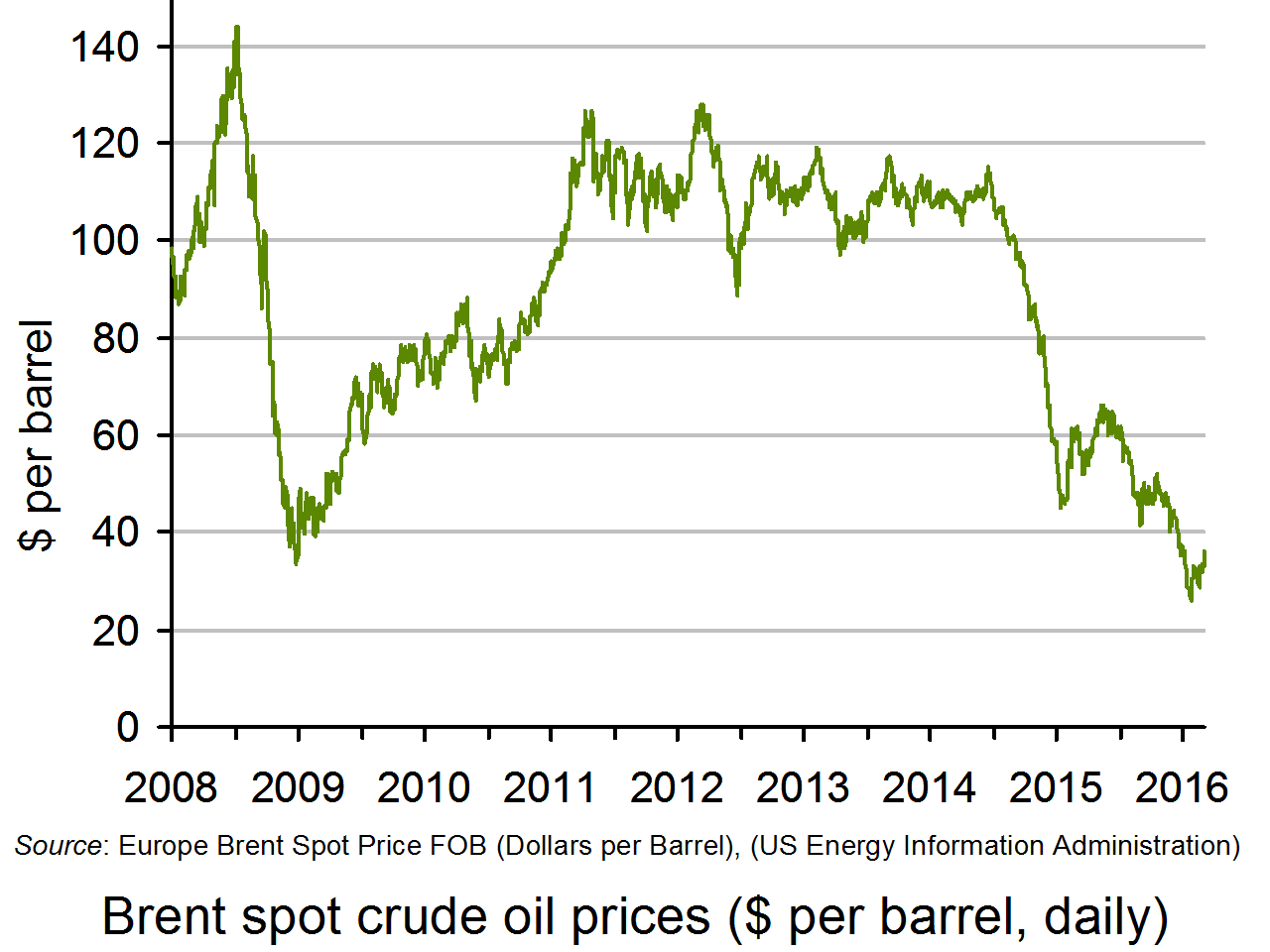 And in the Overview of the IEA’s 2016 Medium-Term Oil Market Report, it is stated that
And in the Overview of the IEA’s 2016 Medium-Term Oil Market Report, it is stated that
In today’s oil market there is hardly any spare production capacity other than in Saudi Arabia and Iran and significant investment is required just to maintain existing production before we move on to provide the new capacity needed to meet rising oil demand. The risk of a sharp oil price rise towards the later part of our forecast arising from insufficient investment is as potentially de-stabilising as the sharp oil price fall has proved to be.
The higher-cost conventional producers, such as Venezuela, Nigeria, Angola, Russia and off-shore producers, could take a long time to rebuild capacity as investment in conventional wells is costly, especially off-shore.
As far as shale oil producers is concerned – the prime target of Saudi Arabia’s policy of not cutting back supply – production could well bounce back after a relatively short time as wells are re-opened and investment in new wells is resumed.
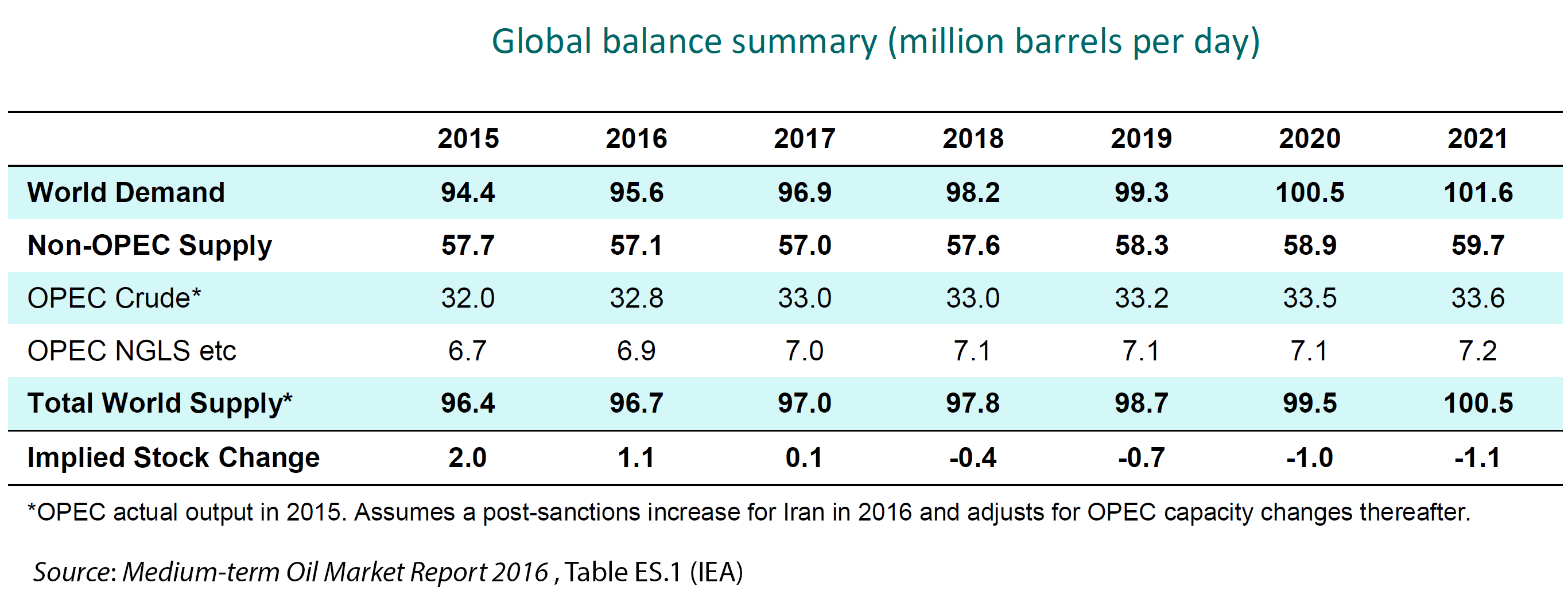
But, price rises in the medium term could then be followed by lower prices again a year or two thereafter as oil from new investment comes on stream: or they could continue rising if investment is insufficient. It depends on the overall balance of demand and supply. The table shows the IEA’s forecast of production and consumption and the effect on oil stocks. From 2018, it is predicting that consumption will exceed production and that, therefore, stocks will fall – and at an accelerating rate.
But just what happens to the balance of production and consumption will also depend on expectations. If shale oil investors believe that an oil price bounce is temporary, they are likely to hold off investing. But this will, in turn, help to sustain a price bounce, which in turn, could help to encourage investment. So expectations of investors will depend on what other investors expect to happen – a very difficult outcome to predict. It’s a form of Keynesian beauty contest (see the blog post A stock market beauty contest of the machines) where what is important is what other people think will happen, which in turn depends on what they think other people will do, and so on.
Webcast
 At $30 oil price, shale rebound may take much, much longer CNBC, Patti Domm , Bob Iaccino, Helima Croft and Matt Smith (25/2/16)
At $30 oil price, shale rebound may take much, much longer CNBC, Patti Domm , Bob Iaccino, Helima Croft and Matt Smith (25/2/16)
Article
Opec has failed to stop US shale revolution admits energy watchdog The Telegraph, Ambrose Evans-Pritchard (27/2/16)
Report
Medium-term Oil Market Report 2016: Overview International Energy Agency (IEA) (22/2/16)
Questions
- Using demand and supply diagrams, demonstrate (a) what happened to oil prices in 2015; (b) what is likely to happen to them in 2016; (c) what is likely to happen to them in 2017/18.
- Why have oil prices fallen so much over the past 12 months?
- Using aggregate demand and supply analysis, demonstrate the effect of lower oil prices on a national economy.
- What have have been the advantages and disadvantages of lower oil prices? In your answer, distinguish between the effects on different people, countries and the world generally.
- Why is oil supply more price elastic in the long run than in the short run?
- Why does supply elasticity vary between different types of oil fields (a) in the short run; (b) in the long run?
- What determines whether speculation about future oil prices is likely to be stabilising or destabilising?
- What role has OPEC played in determining the oil price over the past few months? What role can it play over the coming years?
- Explain the concept of a ‘Keynesian beauty contest’ in the context of speculation about future oil prices, and why this makes the prediction of future oil prices more difficult.
- Give some other examples of human behaviour which is in the form of a Keynesian beauty contest.
- Why may playing a Keynesian beauty contest lead to an undesirable Nash equilibrium?
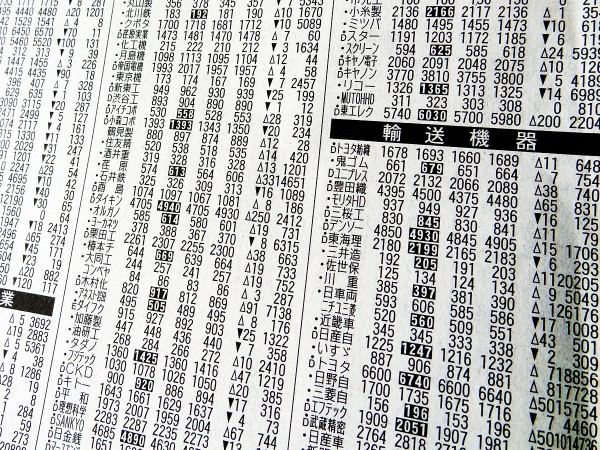 Each day many investors anxiously watch the stock market to see if their shares have gone up or down. They may also speculate: buying if they think share prices are likely to go up; selling if they think their shares will fall. But what drives these expectations?
Each day many investors anxiously watch the stock market to see if their shares have gone up or down. They may also speculate: buying if they think share prices are likely to go up; selling if they think their shares will fall. But what drives these expectations?
To some extent, people will look at real factors, such as company sales and profits or macroeconomic indicators, such as the rate of economic growth or changes in public-sector borrowing. But to a large extent people are trying to predict what other people will do: how other people will react to changes in various indicators.
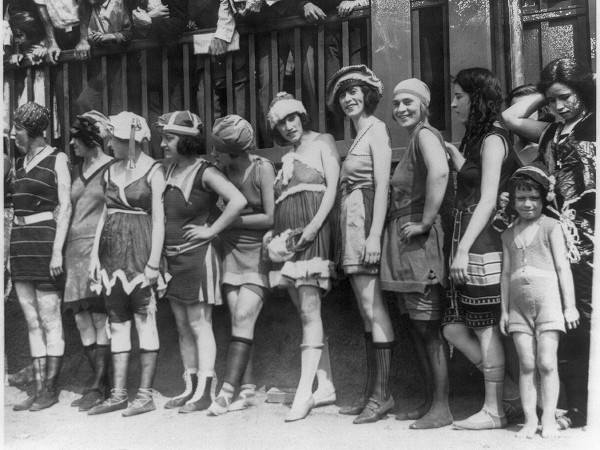 John Maynard Keynes observed this phenomenon in Chapter 12 of his General Theory of Employment, Interest and Money of 1936. He likened this process of anticipating what other people will do to a newspaper beauty contest, popular at the time. In fact, behaviour of this kind has become known as a Keynesian beauty contest (see also).
John Maynard Keynes observed this phenomenon in Chapter 12 of his General Theory of Employment, Interest and Money of 1936. He likened this process of anticipating what other people will do to a newspaper beauty contest, popular at the time. In fact, behaviour of this kind has become known as a Keynesian beauty contest (see also).
Keynes wrote that:
professional investment may be likened to those newspaper competitions in which the competitors have to pick out the six prettiest faces from a hundred photographs, the prize being awarded to the competitor whose choice most nearly corresponds to the average preferences of the competitors as a whole; so that each competitor has to pick, not those faces which he himself finds prettiest, but those which he thinks likeliest to catch the fancy of the other competitors, all of whom are looking at the problem from the same point of view. It is not a case of choosing those which, to the best of one’s judgement, are really the prettiest, nor even those which average opinion genuinely thinks the prettiest. We have reached the third degree where we devote our intelligences to anticipating what average opinion expects the average opinion to be. And there are some, I believe, who practise the fourth, fifth and higher degrees.
When investors focus on people’s likely reactions, it can make markets very unstable. A relatively minor piece of news can cause people to buy or sell in anticipation that others will do the same and that others will realise this and do the same themselves. Markets can overshoot, until, when prices have got out of line with fundamentals, buying can turn into selling, or vice versa. Prices can then move rapidly in the other direction, again driven by what people think other people will do. Sometimes, markets can react to very trivial news indeed. As the New York Times article below states:
On days without much news, the market is simply reacting to itself. And because anxiety is running high, investors make quick, sometimes impulsive, responses to relatively minor events.
The rise of the machine
 In recent years there is a new factor to account for growing stock market volatility. The Keynesian beauty contest is increasingly being played by computers. They are programmed to buy and sell when certain conditions are met. The hundreds of human traders of the past who packed trading floors of stock markets, have been largely replaced by just a few programmers, trained to adjust the algorithms of the computers their finance companies use as trading conditions change.
In recent years there is a new factor to account for growing stock market volatility. The Keynesian beauty contest is increasingly being played by computers. They are programmed to buy and sell when certain conditions are met. The hundreds of human traders of the past who packed trading floors of stock markets, have been largely replaced by just a few programmers, trained to adjust the algorithms of the computers their finance companies use as trading conditions change.
And these computers react in milliseconds to what other computers are doing, which in turn react to what others are doing. Markets can, as a result, suddenly soar or plummet, until the algorithms kick the market into reverse as computers sell over-priced stock or buy under-priced stock, which triggers other computers to do the same.
Robot trading is here to stay. The articles and podcast consider the implications of the ‘games’ they are playing – for savers, companies and the economy.
Articles
Questions
- Give some other examples of human behaviour which is in the form of a Keynesian beauty contest.
- Why may playing a Keynesian beauty contest lead to an undesirable Nash equilibrium?
- Does robot trading do anything other than simply increase the speed at which markets adjust?
- Can destabilising speculation continue indefinitely? Explain.
- Explain what is meant by ‘overshooting’? Why is overshooting likely to occur in stock markets and foreign exchange markets?
- In what ways does robot trading (a) benefit and (b) damage the interests of savers?
 With the deepening euro crisis, the slide back into recession in many developed countries and the slowing down of fast-growing developing countries, such as China and India, confidence is waning.
With the deepening euro crisis, the slide back into recession in many developed countries and the slowing down of fast-growing developing countries, such as China and India, confidence is waning.
But just as pessimism increases, so too does uncertainty. The global economy is getting more and more difficult to forecast. So should economists give up trying to forecast? Should we rely on guesswork and hunch, or looking into crystal balls?
Bank of England representatives have been appearing before the Treasury Select Committee. And they have reiterated the consensus that things are getting more difficult to forecast. As Mervyn King said in his evidence:
There is just enormous uncertainty out there. I have no idea what is going to happen in the euro area.
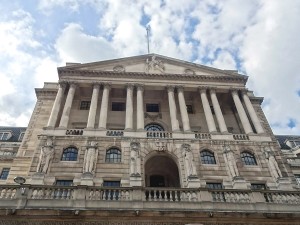 And this uncertainty is making people cautious, which, in turn, damages recovery. As Dr King went on to say:
And this uncertainty is making people cautious, which, in turn, damages recovery. As Dr King went on to say:
There is no doubt that with the additional uncertainty this year there’s evidence of people behaving in a very defensive way, being unwilling to invest and of course the most extreme example of that would be if we were to get to a liquidity trap where essentially the main assets people wanted to hold were claims on the central bank.
Part of the reason for the uncertainty about global growth prospects is uncertainty about what European leaders will decide about the future of the eurozone. Another is uncertainty about how people will respond to the uncertainty of others. But predicting how others will predict is very difficult as they will themselves be predicting what others will predict. This dilemma was observed by Keynes when observing how investors on the stock market behaved, all trying to predict what others will do, and is known as the Keynesian Beauty Contest dilemma (see also).
So are governments and central banks powerless to counteract the uncertainty and pessimism? Can they restore confidence and growth? Members of the Bank of England’s Monetary Policy Committee believe that further action can be taken to stimulate aggregate demand. Further quantitative easing and cuts in interest rates could help as, according to Dr King, we are not yet in a liquidity trap.
UK Economic Outlook Uncertain Amid Euro Zone Crisis – BOE NASDAQ, Ilona Billington (26/6/12)
BOE King: UK Not In Liquidity Trap; No Limit On QE Market News International (26/6/12)
BOE King: Unity On Loose Policy; Not Half Way Through Crisis Market News International (26/6/12)
Full Text Of BOE MPC Dale At Treasury Select Committee Market News International (26/6/12)
Recovery still five years away, Mervyn King warns The Telegraph, Philip Aldrick (26/6/12)
Governor pessimistic on recovery ShareCast, Michael Millar (26/6/12)
Bank’s King says ‘pessimistic’ about worsening economy BBC News (26/6/12)
UK economic outlook getting worse, warns Bank of England Guardian, Phillip Inman (26/6/12)
Questions
- Why is it worth economists forecasting, even if those forecasts rarely turn out to be totally accurate?
- Why is it particularly difficult in current circumstances to forecast the state of the macroeconomy 12 months hence – let alone in two or three years?
- In what ways is the global macroeconomic situation deteriorating? What can national governments do about it?
- What limits the effectiveness of government action to deal with the current situation?
- What is meant by the liquidity trap? Are we close to being in such a situation today?
- Explain what is meant by the Keynesian Beauty Contest? How is this relevant today in explaining economic uncertainty and the difficulty of forecasting the economy?
 With the onset of the pandemic in early 2020, stock markets around the world fell dramatically, with many indices falling by 30% or more. In the USA, the Dow Jones fell by 37% and the Nasdaq fell by 30%. In the UK, the FTSE 100 fell by 33% and the FTSE 250 by 41%.
With the onset of the pandemic in early 2020, stock markets around the world fell dramatically, with many indices falling by 30% or more. In the USA, the Dow Jones fell by 37% and the Nasdaq fell by 30%. In the UK, the FTSE 100 fell by 33% and the FTSE 250 by 41%.
 The key question is what will investors believe. If they believe that share prices will continue to fall they are likely to sell. This has happened since early January, especially in the USA and especially with stocks in the high-tech sector – such stocks being heavily represented in the Nasdaq composite, a broad-based index that includes over 2500 of the equities listed on the Nasdaq stock exchange. From 3 January to 18 February the index fell from 15 833 to 13 548, a fall of 14.4%. But will this fall be seen as enough to reflect the current economic and financial climate. If so, it could fluctuate around this sort of level.
The key question is what will investors believe. If they believe that share prices will continue to fall they are likely to sell. This has happened since early January, especially in the USA and especially with stocks in the high-tech sector – such stocks being heavily represented in the Nasdaq composite, a broad-based index that includes over 2500 of the equities listed on the Nasdaq stock exchange. From 3 January to 18 February the index fell from 15 833 to 13 548, a fall of 14.4%. But will this fall be seen as enough to reflect the current economic and financial climate. If so, it could fluctuate around this sort of level. But a lot of this is second-guessing what other people will do – known as a Keynesian beauty contest situation. If people believe others will buy, they will too and this will push share prices up. If they think others will sell, they will too and this will push share prices down. They will all desperately wish they had a crystal ball as they speculate how people will interpret what central banks, governments and other investors will do.
But a lot of this is second-guessing what other people will do – known as a Keynesian beauty contest situation. If people believe others will buy, they will too and this will push share prices up. If they think others will sell, they will too and this will push share prices down. They will all desperately wish they had a crystal ball as they speculate how people will interpret what central banks, governments and other investors will do. Jeremy Grantham Doubles Down on Crash Call, Says Selloff Has Started
Jeremy Grantham Doubles Down on Crash Call, Says Selloff Has Started








